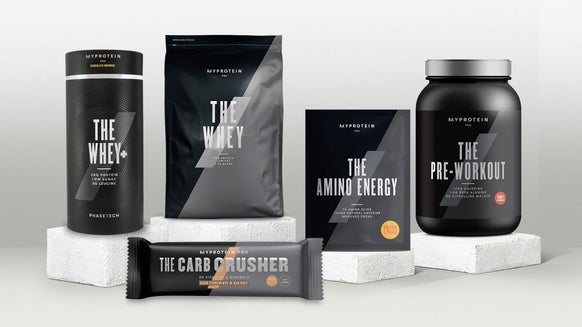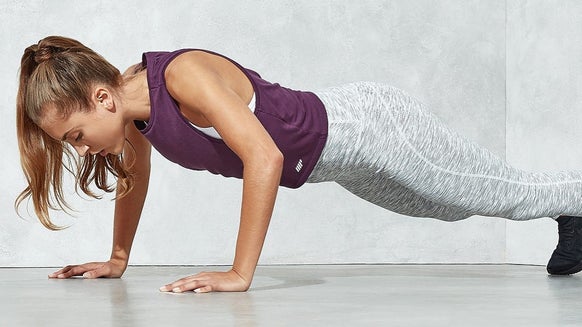
With many returning to office spaces, and given the current climate, a focus for a healthy midday meal has become even more important.
A diverse, well-balanced lunchbox packed with nutrients and minerals can contribute to a healthy body and a healthy mind. It’ll help you to proactively manage your health, aid with your body composition and ensure your immune system is functioning as it should.
Considerations for every lunch box
Don’t worry, this isn’t going to be some complicated instruction manual on how to build a lunchbox suitable for a social media snap. We know you’re busy, so let’s keep this simple.
No, this is going to be a short guide on things to include and why, portion size estimates and why having a few snacks on hand may be important.
When creating a midday meal, you should aim to include:
a source of protein at least one portion of fruit and veg a serving of carbohydrate - a serving of “healthy” fats
A meal this size will be large enough to keep you going as you reintegrate yourself back into office life, while also providing you with all you need to recover from your morning gym session or prepare for your evening one.
Having a few healthy snack choices on hand can also help stave off overeating after work if stress or cravings grow throughout the day because you’ve had enough food on hand to keep you well fuelled.
Why is protein important?
Few nutrients are as important as protein. If you don't get enough protein from your diet, your health and body composition suffer.
Protein forms the majority of the structures in your body (from your skin, organs and even those at a cellular level) and is an important tool to repair and develop tissues. This becomes even more important for highly active individuals who have a greater protein demand (in excess of 1.4g to 1.6g per kg bodyweight per day).
Increased dietary protein may be our best aid in improving our weight management efforts. It improves satiety (helping you feel fuller for longer) and helps regulate blood sugar levels allowing for a more balanced “energy” level throughout the day (which can also help stave off cravings).
A lunchbox portion size of protein should be roughly the size of your palm.
Why fruit and vegetables matter
Fruits and vegetables are a very important part of a healthy, balanced diet. They are good sources of fibre, as well as having lots of essential vitamins and minerals.
These nutrient dense health wonders should be paramount in the diet of all those looking to promote their best ever health and really ensure their immune system is firing on all cylinders.
Eating lots of fruit and vegetables can help you maintain a healthy weight as they are generally naturally low in calories and fat (as long as they aren’t roasted or fried in lots of butter or oil).
A lunchbox portion size of fruit and or veg should be roughly the size of your palm.
Having carbs can be healthy!?
One of the primary functions of carbohydrates is to provide your body with energy, either presently (when consumed), or in the form of stored carbohydrate (glycogen) which can be used when needed. This is incredibly important to sustain energy levels throughout a busy working day.
While carbohydrates aren’t necessary in our diet (as we can create them ourselves), that doesn’t mean they aren’t optimal for health and certainly performance.
They may also contribute uniquely beneficial roles for those looking to manage their weight (in addressing cravings, reducing stress, improving satiety, etc.)
Quality of carbohydrate may be important and focusing on consuming mainly wholegrains and fibre-rich sources could be of greatest benefit to your health. Wholegrains, beans, legumes, lentils and root veg (with the skin on) all fall into this category.
A lunchbox portion size of carbohydrate should be roughly the size of your balled fist.
Don’t forget fats
Fat is critical to your health as it supports a number of your body's functions. Some vitamins, for instance, must have fat to dissolve so that they can be used by your body.
Some fats are also essential (namely omega-3s and 6s), as we can’t produce them ourselves, and so must be achieved from our diet. These fats have a range of health promoting benefits and we should be extra mindful to include them.
These fats will be typically found in healthier sources (non-animal or processed) and may have a protective effect on our heart, mental health and even digestive health (to name a few).
Fats also play an important structural role in many parts of the body and are used in the creation of our body's signalling molecules, hormones.
One caveat of dietary fat is that we should be mindful when consuming fats as they are very energy rich (9kcals per gram) and so it may be easier for us to consume calories in excess of what we need if we have too much fat.
A lunchbox portion size of fats should be roughly the size of your thumb.
Snack time
As mentioned, snacks can be a life saver when the mid-morning or mid-afternoon hunger strikes.
Having a few favourable yet healthy snacks on hand would be recommended — protein bars, high-protein snacks, nuts, or even fruit are all great options.
Even a calorie-friendly chocolate bar or some other type of “fun” snack (like popcorn or crisps for example) can be a useful addition if it fits within the grand scheme of our diet and staves off late night overeating or stress eating after work.
Remember, health is contextual, and you can make any food a good food if incorporated in the right way.
A snack portion size should be roughly between 100–200 kcals (give or take 10 to 15% either side).
Take home message
Having a healthy lunch box doesn’t have to be complicated and the benefits on offer are certainly not to be ignored.
Aside from promoting a better state of health, having more nutrient density, supporting your recovery and immune system as well as optimising your performance (both in and out of the gym), it’ll likely also save you a bit of money (and who is going to turn the nose up at that?).
Give these simple strategies a try and tag us in your lunchbox photos!
| calories 0 kcal |
| totalFat 0g |
| totalCarbohydrates 0g |
| protein 0g |








